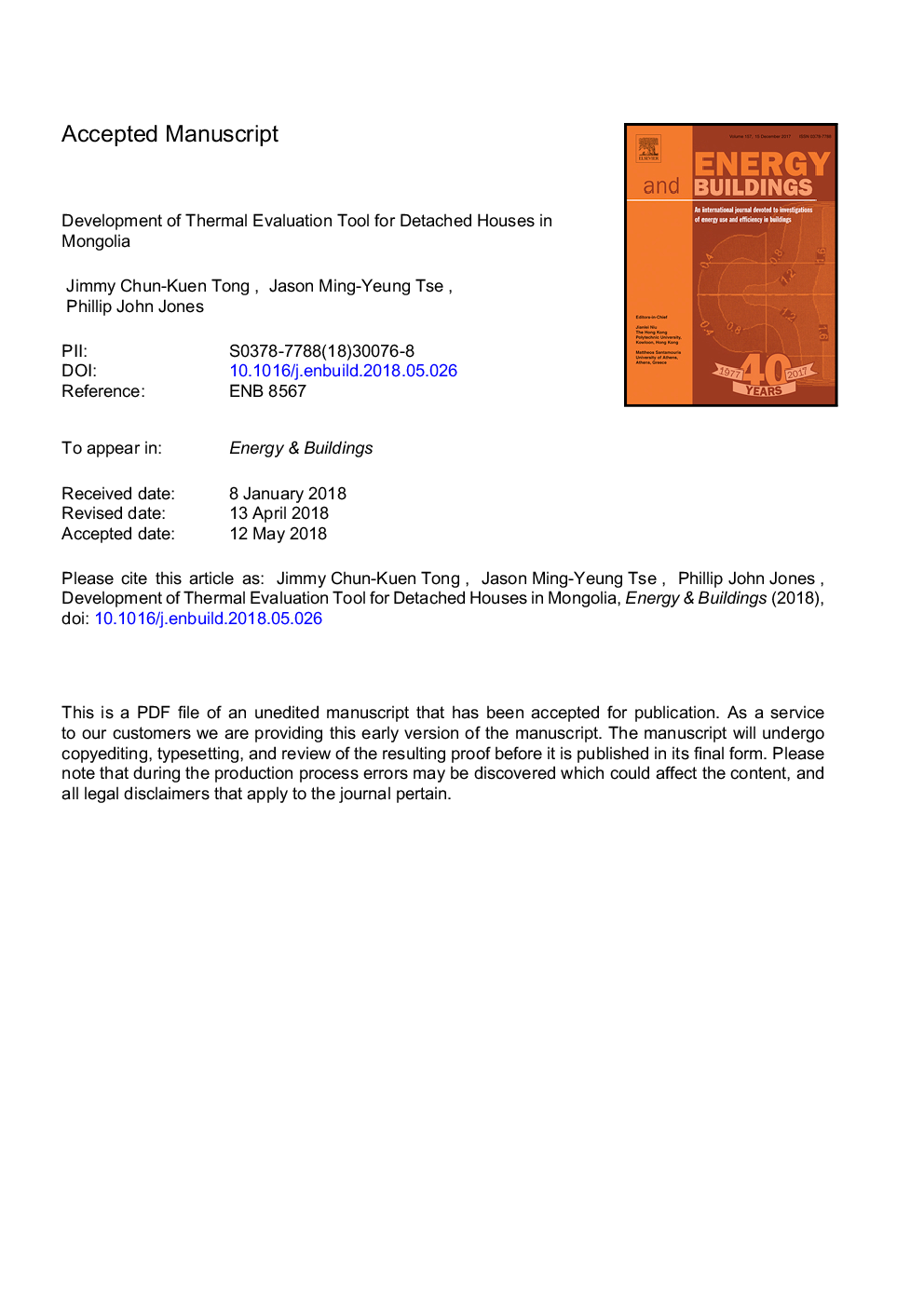| Article ID | Journal | Published Year | Pages | File Type |
|---|---|---|---|---|
| 6727264 | Energy and Buildings | 2018 | 17 Pages |
Abstract
During winter-time in Mongolia, the air pollution is so severe that it threatens the citizens' health. Ulaanbaatar is the capital city of Mongolia, and its population represents about half of the total population of Mongolia. The majority of people in the Ger area, approximately 50% of population of Ulaanbaatar, rely on direct coal burning to generate the required heat to maintain a comfortable environment in the cold season. The heavy reliance on coal leads to catastrophic air pollutant emissions including carbon dioxide, sulphur dioxide, nitrogen oxides and particulate matter, which leads to global warming, climate change and human health. As it is identified that building insulation retrofit is one of the best ways to reduce the reliance on coal consumption due to the improved heat retention and air tightness, a tool, named “FIXIT” has been developed to quickly quantify the impact from insulation retrofit. This paper presents how “FIXIT” was developed and is applied to help house owners to understand their building performance. Not only can “FIXIT” be applied for individual houses, it can also be used to estimate the reduction of air pollution from coal burning due to insulation retrofit. With “FIXIT”, it is estimated that about 530Â ktons of carbon emissions reduction can be targeted by applying building insulation retrofit, if around the 100,000 detached houses in Ulaanbaatar apply insulation retrofit. By highlighting the advantages on the building performance, “FIXIT” can encourage more house owners to improve their house insulation quality and thus contribute to the air quality, creating a cleaner and healthier environment and saving on fuel use.
Keywords
Related Topics
Physical Sciences and Engineering
Energy
Renewable Energy, Sustainability and the Environment
Authors
Tong Jimmy Chun-Kuen, Tse Jason Ming-Yeung, Phillip John Jones,
